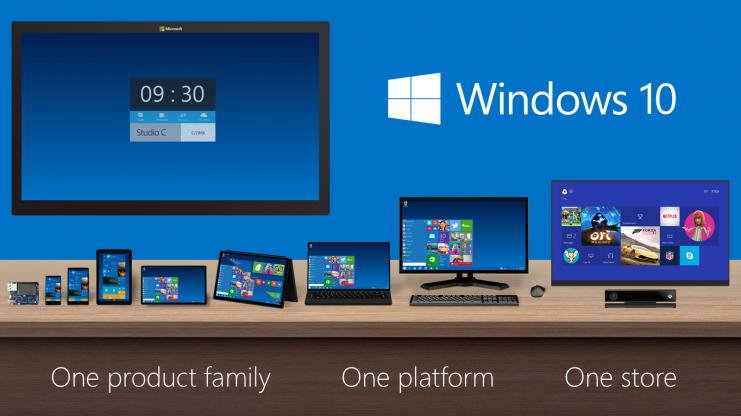We’ve heard Microsoft talking a good game about all of its platforms running the same operating system, but the company had yet to share any information about how it planned to deliver. All of that changed early this afternoon when it revealed Windows 10, a new operating system that’ll run on everything from tablets, to smartphones and — most impressively — the Xbox One.
Microsoft revealed Windows 10 and set some broad expectations for what users can expect from it at a briefing in San Francisco and on its Blogging Windows website. Based on slides from the presentation, we know that Windows 10 will run on the Xbox One. We also know that thanks to Windows 10 one app store will be at the center of the Xbox One experience. What changes the update will mean for the Xbox One interface and how the Xbox Store will change remains completely unclear since Microsoft didn’t share much in the way of details outside of the core features its introducing for mouse and keyboard users.
Just as Microsoft revealed at its BUILD 2014 conference earlier this year, Windows 10 will return the Start Menu to the position it held in Windows 7. Users will be able to start Desktop apps from there and browse through some of the files they have stored on their machine. This new Start Menu will be resizable and include Live Tiles for apps downloaded from the Windows Store. When mouse and keyboard users open Windows Store apps they’ll get a versions that run in the Desktop interface, complete with close and minimize buttons. Users will now be able to snap as many as four Desktop apps to their screen and a new Task view will help separate apps meant for different activities. 2-in-1 machines like Microsoft’s Surface Pro 3 will get a interface of their own.
Users of traditional Windows devices will get their hands on Windows 10 early through a Windows Insider Program launching tomorrow morning. In this way, Microsoft will solicit feedback and make changes in the same way it does for Windows Phone users today. A consumer preview will launch next year that and contain the changes users at home will care about. Windows 10 won’t launch for everyone until “later” in 2015. Presumably, that’s when we’ll see phones and tablets running Windows 10 and Microsoft will have more to say about how it’ll surface the Windows 10 app store on Xbox One.
Whether all of these changes will truly unite Windows remains to be seen, but at least we won’t have to hear users complain about the Start Menu for much longer.
